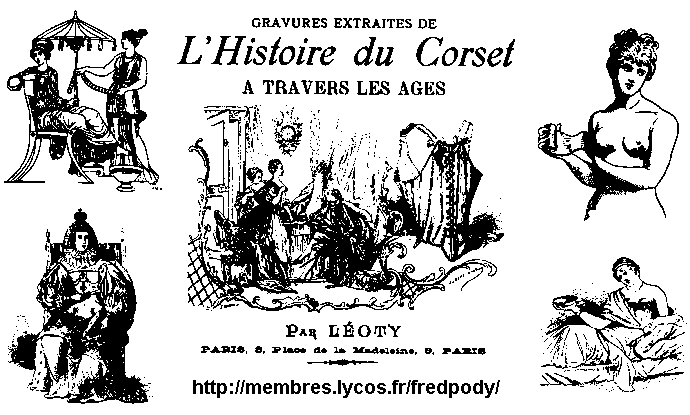
The Corset Throughout the Ages...
by
Ernest Léoty
[Translator's Note. I have had to take some liberties with the exactness of this translation to make it read reasonably in English. M Leoty favours a very prolix and flowery language with enormous sentences consisting of many subordinate clauses which do not translate exactly into any conventional form of English prose. I have therefore split up most of the very long sentences, rearranged some and even omitted the occasional phrase which seemed to me to be repetitious. Even after this treatment it is still rather cumbersome and not a simple read, but is the best I can do. KJ]
When the royalty was abolished, out went the boned bodices and tight waists. The French Revolution engulfed all aspects of clothing in its reforms: the whale-boned corsets and the panniers, French dress and wigs were completely suppressed.
The prerogatives of the guilds vanished at the same time. The tailors who, from the establishment of the couturiers, had kept the privilege of decorating all fitted clothes and who, for this reason, made the dresses of the Court, did not reappear after the return of calmer times. Simplicity in women's dress replaced the unbridled luxury of the last years in the reigns of Louis XV and Louis XVI, and the Directorate adopted an antique style, and one saw the reappearance of Grecian bands to which the name "zona" was given. This belt was worn on the dress, higher than to original zona, its upper edge was lightly fixed in front just below the bust.
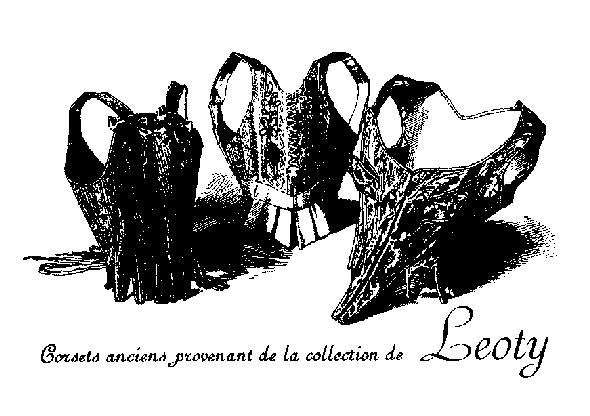
Plate X gives an idea of the zona, after an engraving titled "The Heroines of Today". This belt was soon replaced by a more comfortable corset which slightly confined the waist, and was without bones.
During the period of the Consuls, the so-called "republican" form of dress went out of fashion. The Grecian dress had already had its time, and the "Unbelievables" made their appearance; it is true to say that they lasted a very short time.
Madame D'Abrantès reports that she saw, during a ball in 1800, "a woman wearing a blue corset of velvet or satin with a skirt of crepe over white muslin edged with two rolls of ribbon.." This crepe and muslin clearly shows that the clothes were more than light, and that with an extreme decolleté, it gave women a very undressed appearance. A magazine criticised very strongly this fashion in a conversation which it described between a fashionable couturier and a woman from the provinces.
"Citizen, I have just arrived from the country. Please tell me what is the fashion so that I can fit in."
"Madame, that is very easy. In two minutes I can show you, if you will let me."
"Certainly."
"Take off your hat."
"There you are."
"Take off your skirt."
"Done."
"Take off these petticoats."
"There you are."
"Take off this neckerchief, this corset and these sleeves."
"Is that enough?"
"Yes, Madame. You are now fashionable. As you can see, it is not very difficult; it is sufficient just to undress."
One saw, at about the same time, a new fashion - that of spangles - but that soon went as a result of exaggeration. Also, it gave rise to this song "Spangled bonnet." etc.
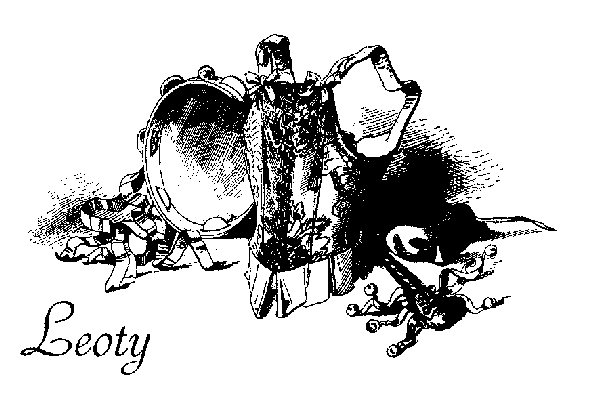
At the beginning of the century, the corsets of elegant women were very short at the top, and the shoulder straps very narrow. In the front they stopped short of the bosom and in the back they left free the shoulder blades but at the bottom, they clasped the stomach and the hips.
Towards 1810, the Ninon corset (fig 33) was the rage. Only the busk maintained the rigidity of the corset.
In a little poem with three verses, titled "The art of adornment or ladies dress 1811", the talent of a famous maker was praised: "Come, Leroy, listen and be my guide..etc." In the third verse where the author says; "the virtues and essential qualities of a hairdresser and other fashion artistes", he identifies the following qualities as being those of the perfect dressmaker: calmness, respect, discretion, patience and precision.
This Leroy, mentioned above, was the master of fashion, it was he who dressed the Empress Josephine; it was also from his work rooms that the clothes came which Napoleon sent to Marie-Louise of Austria, his second wife, before she came to France.
Towards the end of the First Empire, corsets became nearly as short below as they were on top. The busk came scarcely above the umbilicus, the lower edge closely following the upper contour of the hips. The corset extended behind to the middle of the back where it was held by the boning round the eyelets; above, gussets were inserted which rose to the level of the bosom which was supported by a close tight boning which was at the same time both supple and resistant; the bones being set obliquely from the bottom to the top, keeping the breasts separate, and the whole being given the name of "divorce corset". At the sides, the corset was scarcely more than 10 to 12 cm in length, and contained a very simple vertical stiffening consisting of a few narrow, thin bones.
An author informs us that another great maker, Lacroix, whose fame was universal, attached to the back of the corset a little cushion covered in white taffeta which made the waist look more indented. The writer adds that the fashionable did not baulk at the price of a hundred francs, relatively high for the time, but rushed en masse to Lacroix to buy.
From 1815 to 1830 corsets gradually lengthened, above and below. The gussets at the top enclosed the bosom, those at the hips came down very low. The boning became stiffer, the fabric almost always double, and the busk normally long and thick. This corset, very hard and thick, was furnished with wide shoulder straps. (Plate XI).
Charles X was an enemy of corsets that were too tight and of slim waists. "Formerly, it was not unusual," he said, "to find in France a Diana, a Venus or a Niobé, but nowadays, one sees only wasps." It was towards 1820 that the corset industry, which had languished since the end of the Revolution, truly developed. From that time, numerous improvements were made to corsets and their accessories: in 1842 a new corset appeared, called the Paresseuse (lazy woman), which differed somewhat from those of earlier times; it held the waist, the bosom and the hips better, it was more comfortable to wear, and a new system of lacing was adopted. This corset, having undergone numerous modifications in height and length, is what has now come down to us, and since then, it has been established that the waist has become one of the most attractive of feminine features.
During the twenty years of the Second Empire, corsets, although more and more comfortable, were modified very little; the fashionables, imitating the Empress Eugenie in their dress, had to copy so to speak the waist of their sovereign; and that was the fashion of the so-called short waist. This expression is not precise, for the waist at that time was quite different from that which obtained during the First Empire; the corsets worn under the reign of Napoleon III were adapted exactly to the natural waist, that is to say at the base of the ribs, but they were very low-cut above and short below, they left the shoulders free, and the gussets did not reach as high as the bosom, the waist was less raised. To distinguish this style from that of the First Empire, the waist should be described as low, for it had nothing in common with the short waist of the beginning of the century, because the corsets were worn below the breasts and gave a completely different aspect to the dress of that time.
After the events of 1870 [Franco-Prussian war], fashion lost its direction, and it stagnated for two years, and towards 1873, the long waist was seen which brought in the cuirasse corset with its famous and hideous spoon busk which was useless, totally unattractive and gave the corset an orthopaedic look which eliminated all feminine elegance. As fashion is never without exaggeration, the waist was lengthened more and more until soon the waist becomes so long that women appear to be almost all bodice and no skirt. (PlateXIII)
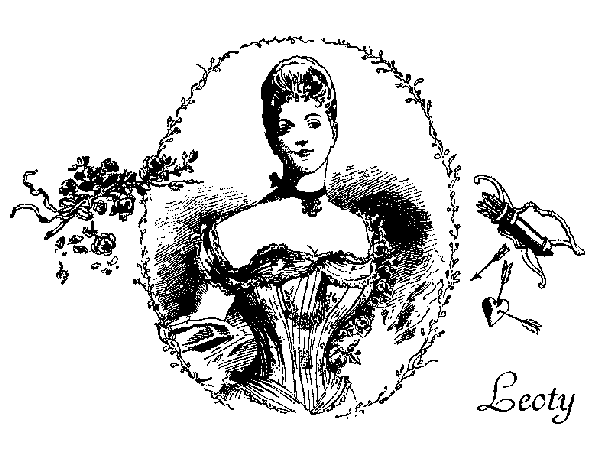
For about two years, waists were no longer lengthened, nor was there a return to the short waist; at that time, only one thing was tried, and that was to suppress, as much as possible the arched back which pushed out the stomach in a horrible manner. I am far from criticising this style which had a true and well understood justification to avoid going to extremes. For a year, the Empire style could be seen; I should say that happily for our elegantly dressed ladies, it was of short duration; during its self-styled success, a variety of styles could be seen; the Grecian, the Middle Ages, the Renaissance, Henry II, Henry III, and Louis XIII.
The resistance to adopting these fashions shows clearly how much the ladies held on to the elegance of their waists. For the Empire is buried, I hope for ever; we are at this time back in 1830, much better for waists; the crinoline is coming back and with it one can foresee a return to the styles of Louis XV and Louis XVI.
Having studied in depth, as this book shows, all the changes which the corset has undergone throughout history, we can see that whether the waist is short, low or long, we must be in tune with fashion, and make an effort to stay away from ridiculous exaggerations or dangers to health.
The corset that should be worn.
As I wrote in my preface, before I finish this booklet, I am going to look at the corset from a medical point of view. The question of a woman's health has been running for two centuries using up quantities of ink; also to make this book of greater use, I will simply repeat the advice of writers and doctors who have addressed this subject, and I will add a few ideas on the actual corset and on the qualities which it should combine from the double viewpoints of health and aesthetics.
In the Dictionary of Conversation, Dr Vincent Duval, a distinguished orthopaedic surgeon, gives this opinion of on the corset: "I am consulted daily by girls with slight curvature of the spine for which I advise simply a corset with side steels. The use of this device always restores the waist to its normal condition. These corsets are sufficient to correct and hold the shoulders and prevent undesirable movement."
If Dr Duval advises use of corsets, Dr Bouland is more emphatic; according to him one should not recommend, one should prescribe (his word) corsets. "In many of these cases," he says, "they fulfil the conditions demanded for health."
The encyclopaedia of the Nineteenth Century gives, in its article on corsets, the following conclusions: "If the abuse of corsets has occasionally been followed by accidents, their use, methodically directed, can conversely become a great benefit, effective in a host of cases: for girls who have already contracted bad posture, the prolonged use of an elastic corset is often sufficient to correct slouching. Leaning to one side or the other, or even to the front or back similarly finds its remedy in the constant application of the corset." The Modern Encyclopaedia claims that: "The modern corset has nothing in common with the old one, not even its name, because 'corselet' or 'corps' were the terms then used."
The editor of the article dedicated to the word corset in this work adds that several Parisian corsetieres have succeeded in making an artistic creation of incomparable suppleness, which allows the body to move rather prevent it, and gives a beauty to the woman with a purity of line which thrills and charms the eye.
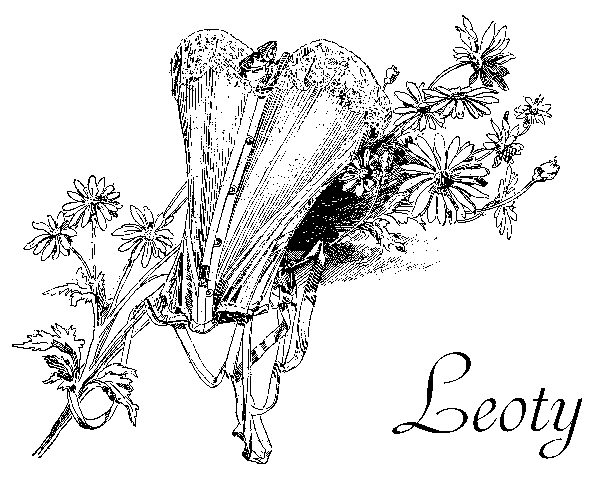
From the most recent publication of the set of works in which I have reviewed showing the uniformity of witness to the incontrovertible utility of the corset, and from the Great Encyclopaedia, as yet unfinished, I have extracted the following lines: "At a certain time in adolescence, a young girl needs control...etc." This study is signed Dr Collineau, the scientific editor of the Great Encyclopaedia.
I will continue these quotations from the advice of Dr Bouvier who states that he will follow "The Corset Question"
1. The history of the dress of the main peoples of antiquity shows a need for a containing garment tightened to a greater or lesser extent round a woman's body. This was realised in ancient times just as it is in modern Europe.
2. Formerly, as these days, women were inclined to exaggerate this constriction to the detriment of their health.
3. In modern history, one sees, in turn, after the abandonment of the Roman tunic, the waist marked simply by bodices fitted to the body, then reinforced and gripped in a type of cuirasse called a whalebone body, and again finally redesigned, the latest form of this special garment.
4. Although the improper use of corsets could cause something like the undesirable effects of the earlier corps, it is only a minor risk when their manufacture and application is made in a sensible manner.
5 It is incorrect to attribute tapering in the lower part of the chest area to the influence of corsets; normal reduction, within certain limits, in both sexes, is subject to variation for reasons other than the constriction of this garment. The comparative examination which I have made of a large number of subjects tends to show that only in exceptional cases is there a permanent shrinking of the rib cage.
6. It has been suggested without proof that the use of corsets is a frequent cause of spinal curvature.
7. Not only considerations of aesthetics and the social status of the woman should be considered by the doctor in allowing the use of corsets apart from the restrictions indicated by their immediate effects, but conversely, there are other circumstances such as the size of the breasts, the slackening or distension of the muscles in the abdominal wall, the normal moulding of the trunk, and spinal curvature, which could indicate strongly the need for this type of support, either for health reasons or even to assist the cure of certain lesions.
In his great work on the art of adornment and dress, Charles Blanc, art critic and engraver, brother of the famous historian, considers a woman from an artistic an aesthetic perspective. As a result, he does not separate the bodice and the corset: to hide and at the same time to show, or rather to let one suspect and simultaneously to let one see, these are the two goals of the bodice; but one should not forget that what one hides is exactly that which one wants to show.
He concludes in these terms: the corset is of overriding importance because a woman displays the grace of her body down to her belt, and if her figure has some faults, she can reduce them or deceive the eye by this clever device.
In the Larrons Universal Dictionary of the Nineteenth Century, the corset is praised thus: for a score of years, seventy patents have been taken out for making corsets..etc.
I could not show better the efforts of the corset industry has taken to combine art and science in such an absolutely perfect way. But I must point out that the above sentences are over twenty years old, and everybody would agree with me to confirm that since that time in every branch of its activity, Parisian industry has made giant steps forward and has achieved prodigies.
I do not wish to bore the reader with any more quotations, already too many works are known to everyone, but I think it would be useful to reproduce a passage devoted to corsets in that Bible of the elegant life: 'The Art of Dress'. In it Violette shows exactly the role of the corsetière: preparing for the work of the couturier the corsetière makes the woman, a living statue shaped by nature, a statuette of grace and fragility, of conventional form, but so seductive, the true work of a sculptor who, in every elegant age, has held an important place in the art of adornment.
Ah! The corset! How much care they took, our beautiful ancestors in the Eighteenth Century! Remember the spiritual corsetière of old Paris, whose centenary sign included this perfect definition written at the base of a pretty white satin corset: "Constrain the large, support the weak, bring back the lost." The personal opinion of one who has published his plea for a sometimes neglected cause and to help it succeed, I have taken the authors, and they are unfortunately not numerous, who have felt themselves called to treat the corset question from a medical and technical point of view.
Last year, a Parisian journalist reissued an oft reprinted article by pessimistic doctors, on the dangers attributed to the use of the corset. Having noticed these attacks which resuscitate an old argument and which is only concerned with virtually prehistoric corsets compared with those of the current, the excellent journal Le Figaro, honoured me by asking my advice as a competent person. That is how I could write in its edition of the 1st August 1890 with a good chance of not being contradicted: "The modern corset is not a prison as it was formerly said to be, but a pleasant abode which one can improve or decorate, and if it is dangerous to the development of the body or the working of the organs which it envelops, doctors should proscribe it; but, quite the opposite, they prescribe it, and every day clients are sent to us by the most eminent doctors. Yes, a real corset, but a well made corset you must understand, is essential for bringing out the elegance of the waist, and quite outside any question of aesthetics, and so important that there is no need to discuss it here, the corset is called on to combat postures taken by girls which are injurious to their health. It is true that in this special case a corset should hold the shoulders back and help the development of the chest.
In the interest of my readers, let me now finish with a summary of the qualities which a corset should have to be absolutely perfect.
Not wishing to be accused of bias, I have borrowed from Dr Bouvier these last lines which will serve as the conclusion of my work: "A corset which is truly worthy of the name should be created such that it does not compress those parts of the body with which it comes into contact, nor should it affect the vital organs. A corset which possesses these requirements is easily laced; its pressure, which is nowhere very great, is above all gentle on the most sensitive or the least resistant parts of the body. Its easy fit and elasticity are such as to present no impediment either to movement of the ribs or abdomen when breathing, nor to the expansion of the stomach during digestion. It widens enough at the top to support the breasts without compressing them, the shoulder straps are quite loose and made of a soft and elastic material or are absent altogether, and the arm holes are cut generously. The bones or the steels set within the two layers of material to preserve its shape and prevent it riding up or wrinkling should be few enough in number, thin and flexible and properly placed to avoid any feeling of compression or of hindering movement. The busk should be supple and light with a convenient shape or even better replaced by two slender bones, joined by elastic material. Finally, the whole corset, where it encloses the pelvis has a solid point of support at the hips and following the natural shape of the sides can, without being too tight, mark the waist without cheating. As Jean-Jacques Rousseau commented: "It is in this way that the corset, used intelligently and carefully applied, can have only a beneficial influence on the health of a woman, which must be as valuable to those that wear it as to those that admire it."
Please excuse this long discussion, but it is useful to expound on what one has studied, and to contribute, each within his own modest sphere, to the education of everybody. Thus it is as a corsetier, not as a writer, and without any other pretension that I have written these few pages; and if I am prepared to accept having made an imperfect little book, be assured that we, my wife and I, would never allow a corset to leave our workrooms which was not strictly made in accordance with demands of aesthetics and a lady's health.
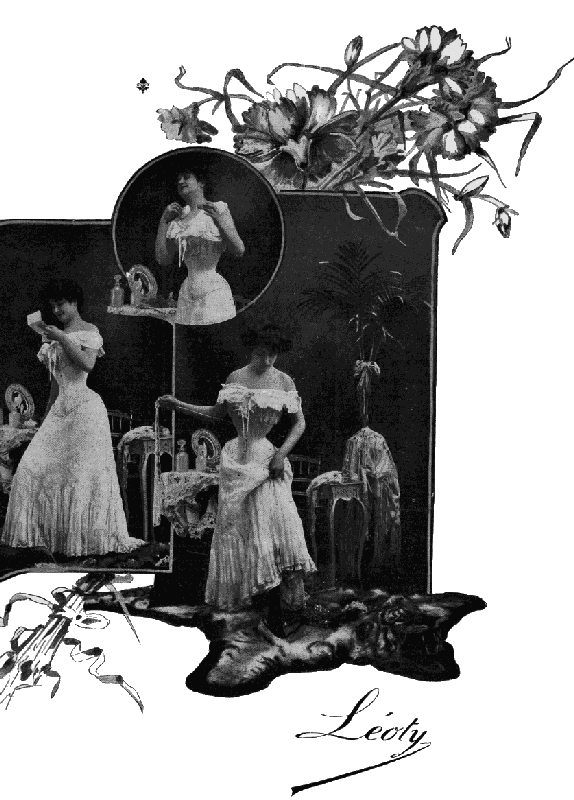
Retour aux textes Retour page d'accueil